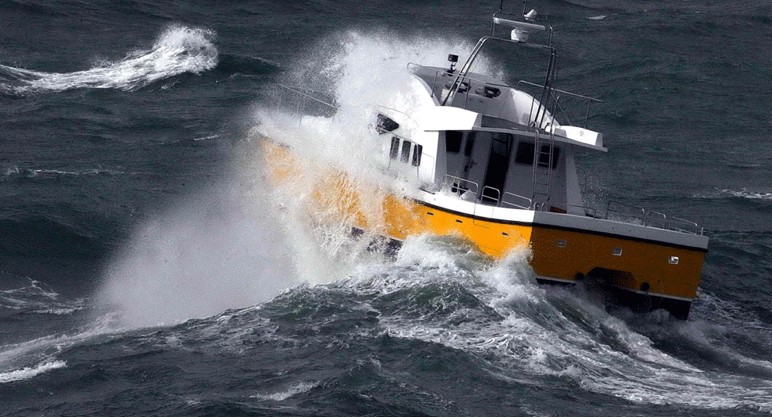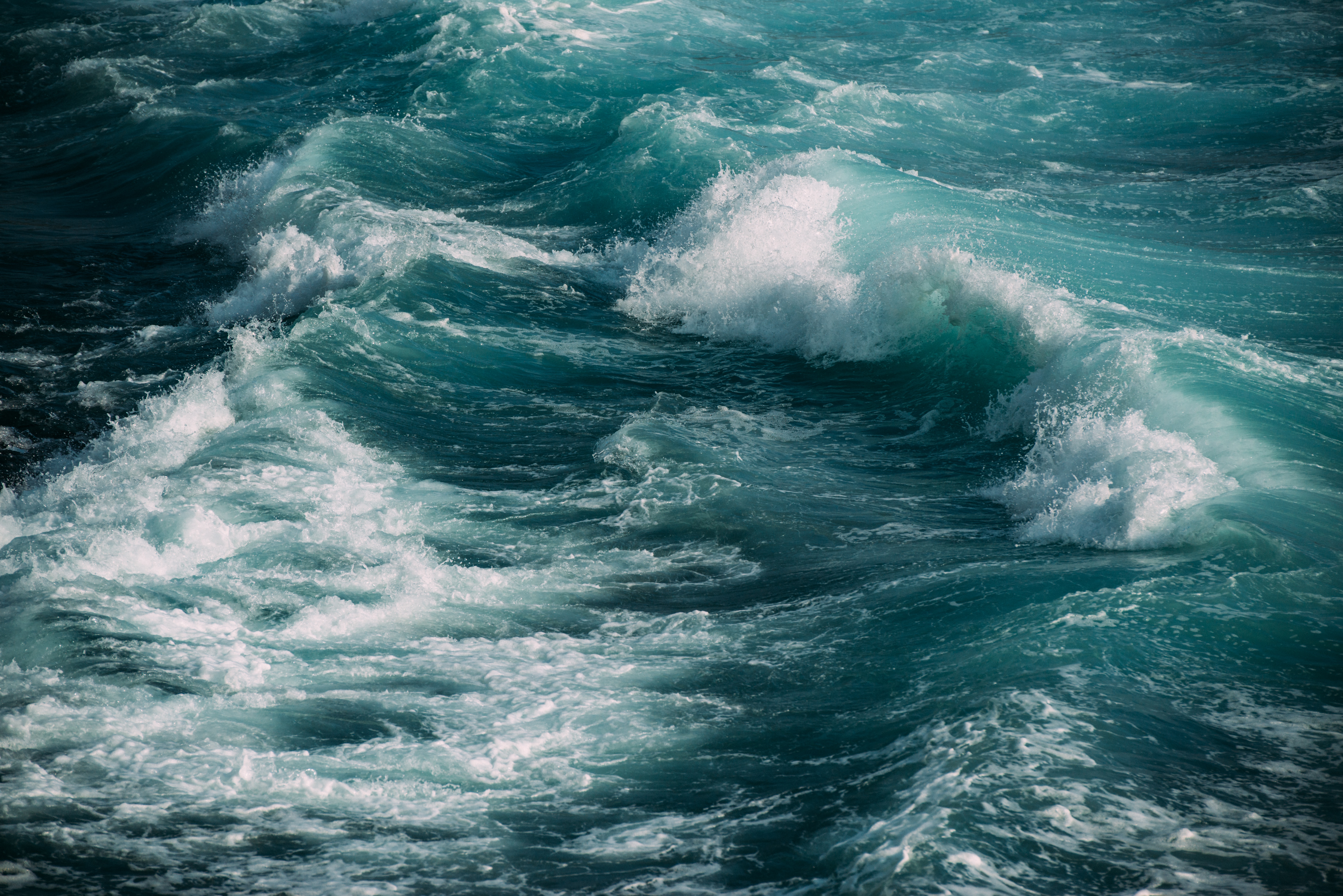Heavy Weather Piloting — Part I

Water Surface is Usually Far from Calm
In harbor, your problems tend to be those of handling the boat in close proximity to other boats and harbor installations. Out at sea, you will come up against a whole range of different conditions to those in harbor and there are many new techniques to learn. It is wonderful to leave the harbor for the freedom of the open sea, but the first thing you notice out there is that the surface of the water is usually far from calm.
You may be lucky and choose a calm day. If you do make the most of it because calm days are not always the norm and in most situations, you will have to cope with wind and waves. The effects of these will be felt most if you have a planing boat because as speed increases the effects of the waves tend to become magnified.
The secret of handling a big cruiser at sea is to match the speed of the boat to the conditions. The handling techniques for displacement and planing boats are quite different. Displacement boats have a top speed of about 8-10 knots, but a planing boat is likely to achieve speeds in excess of 20 – 25 knots quite easily. With both types of boat, however, it is essential to match the speed to the conditions.

With modern boats, the weak link in the whole system tends to be the crew rather than the boat and its equipment. The boats are generally built to a very high standard and are capable of taking considerable punishment from the wind and the waves.
It is likely that the crew will start to object to difficult conditions long before the boat. Do not ignore the protestations of your crew – rather, heed them as a warning signal and try to find some way of improving conditions. When life starts to become uncomfortable it generally means that you are pushing the boat too hard. After all, in most cases you go out to sea for pleasure, so having a comfortable ride should come somewhere near the top of your list of priorities.
Even in a displacement boat, speed can have a significant effect on comfort. It is all a question of the speed of encounters with the waves. Hence, when you are traveling into a head sea with the waves coming towards you, your period of encounter with the waves will be much quicker and therefore the speed at which you travel is likely to be a lot more critical. In a following sea you can maintain a higher speed because the waves are traveling in the same direction as the boat and the period of encounter is much slower. In a following sea, therefore, unless the seas are quite rough, full speed will probably be the order of the day. However, there are other factors to be considered with following seas, as we shall see when we look at this in more detail.
In a planing boat, the higher speeds obviously increase the speed of encounter with the waves quite considerably, but to a certain extent the hull of the boat is designed to take this into account, and so you do not always have to ease back as soon as you might think. The warning signs come from the motion of the boat: if this starts to get too lively for comfort it is time to ease back. If the boat starts to fly off the top of the waves you are probably pushing things too hard, although this can be exhilarating in the short term and most good quality cruisers are built to take this sort of treatment.

The Effect of Waves
It is not only the speed of encounter with the waves that affects the performance of the boat, but also the shape of the waves. In some conditions (usually when the wind is against the tide) the waves are quite short and steep. Conversely, when the wind is with the tide there may be a flattening out of the waves and the change when the tide turns can be quite dramatic. In an area where strong tides run you should be aware of this change because a nice gentle sea can, with the space of an hour or two, change into very uncomfortable conditions with short steep seas.
When seas become short and steep, the wave length (i.e. the distance between the waves) also reduces and this means that the period of encounter is also speeded up. From all this you can imagine that life can become quite uncomfortable on board. In this situation it may not always be easy to match the speed of the boat to the conditions, because the boat may not recover from one wave before it meets the next.
When handling a powerboat at sea you need to have a reasonable understanding of waves because they have a very significant effect on the boats. The wind acting on the surface of the water generates waves. In winds of up to about Force3, the waves generated under normal conditions are not likely to have very much effect on the boat. It is only when the wind starts to freshen that the waves increase to such a size that you will have to adjust your speed to suit the conditions. The main waves come from the direction of the wind, but there are usually residual waves and swell from previous blows which tend to make the waves irregular and to a certain extent, unpredictable.
The shape of a wave is not even. The windward face of a wave always has a gentler slope than the leeward face, which can be quite steep. This means that when you are going into a head sea you face the steep side of the wave but have a gentler slope when you get over the crest. In a following sea you have a comparatively gentle ride up the back of the wave, but there can be quite a sudden steep drop on the other side. This steepness can be exaggerated quite considerably if the wind is against the tide and it is the steep leeward face of the wave than can cause most of the trouble. If the wave is breaking then you have a moving body of water that has considerable power, and in these sea conditions you will need to handle your boat with considerable care.